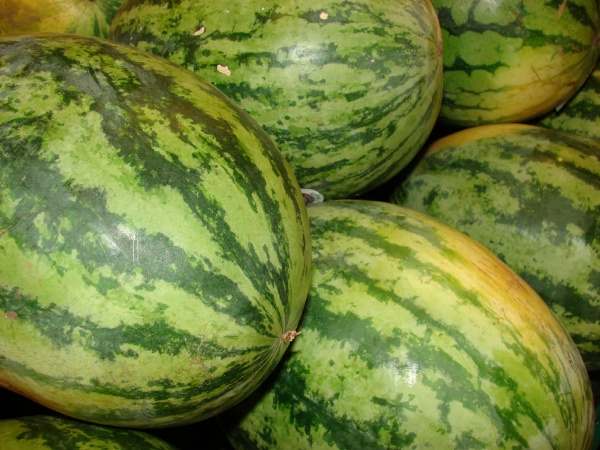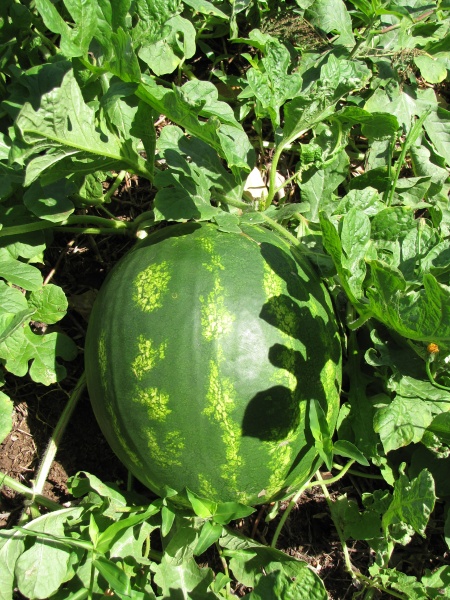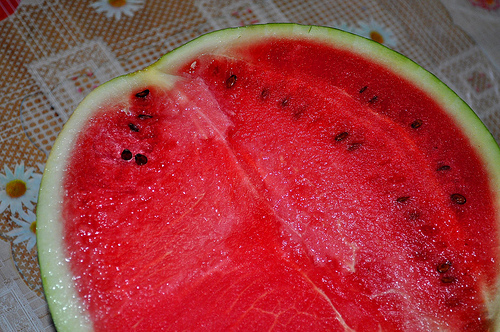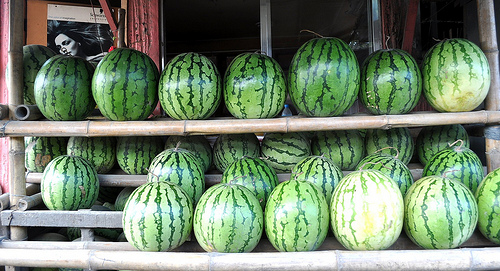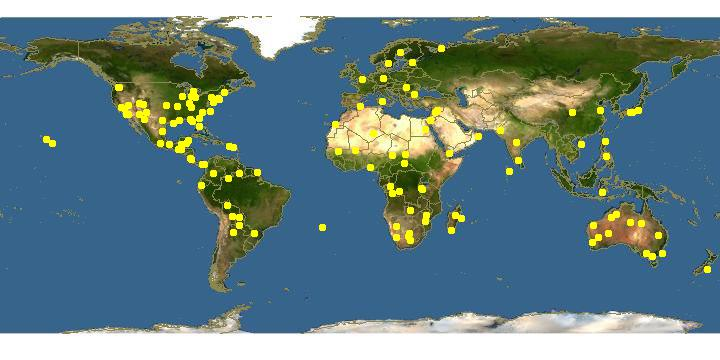Habitat
The watermelon originates from the Kalahari Desert in Africa,
but can be found in numerous areas around the world including
all tropical, subtropical, and warm temperate areas. It is
produced in 101 countries today, and makes up 6.8% of the world's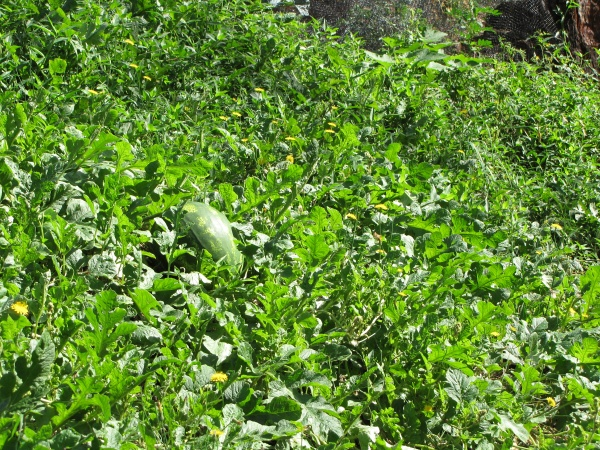 area dedicated to vegetable productions. Natural environments include
grasslands, bush lands, and along watercourses, all at altitudes of
50-1500 m. However, it can be cultivated in any climate containing a
warm summer, and is capable of growing in
temperatures between 22 and 280 degrees Celsius. Growing
conditions are best in low to medium rainfall areas, with a
requirement of 400-600 mm of rain per cropping season. However,
too much
rainfall can lead to leaf diseases and affect flowering.
area dedicated to vegetable productions. Natural environments include
grasslands, bush lands, and along watercourses, all at altitudes of
50-1500 m. However, it can be cultivated in any climate containing a
warm summer, and is capable of growing in
temperatures between 22 and 280 degrees Celsius. Growing
conditions are best in low to medium rainfall areas, with a
requirement of 400-600 mm of rain per cropping season. However,
too much
rainfall can lead to leaf diseases and affect flowering.
Even though, it isn’t extremely picky, the wild watermelon
favors sandy loam and thin soils that are slightly acidic and well
drained. It also prefers alkaline soil. The ideal pH is between 6.0 and
6.5, but can grow in soils with a pH of 5.5 as a minimum. If the pH is
lower than 5.5, soils are often associated with manganese toxicity which
leads to poor growing effects. Watermelons do not survive frost or cold
soils. It needs at least 6 hours of sun a day which is why they grow in
warmer seasons. The watermelon takes up a lot of space with their long
winding vines, however they do well when sharing space with pumpkins and
cucumbers as they occupy a different niche.
Geography
The distribution of the Citrullus lanatus (the yellow dots) around the world is phenomenal. As you can see below, it is located in almost any area that has a warm season. The primary reason it is not located in some areas that have some warmth, is because those areas don't have the sufficient soil required for its growth. It's evident that it is not located in the very cold regions as it has not acquired any adaptations to cold temperatures.
Watermelons in Wisconsin!
Being
a state with a hot summer, Wisconsin has been a location that the
Citrullus lanatus has been able to adapt to. The most effective
growing season begins in June and ends in August, as those are the
months with consistent temperatures between 70 and 90 degrees
Fahrenheit. Watermelon is grown throughout the state in gardens
controlled by humans and in its natural environment. The most popular
breeds of watermelon seen in Wisconsin are the Golden Crow, Honey Heart
(seedless), Jack-of-Hearts (seedless), King-of-Hearts (seedless),
Paradise, Royal Jubilee, Sugar Baby, Sweet Favorite, Yellow Baby, and
Yellow Doll. Another popular organism in Wisconsin is
The Castor Bean.
Although the watermelon has not adapted to extremely cold temperature, learn about ways they have adapted on the adaptation page.
